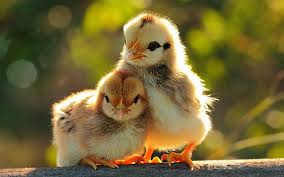 Spring in Colorado is here and I am sure most of you would agree that it doesn’t seem as though summer is right around the corner! Despite the gloomy, rainy weather, this is the time of year when new life abounds. The smell of fragrant tree buds fill the air, the grass greens and the sounds of nature become almost celebratory! Every year I welcome the calls of our feathered friends even if it is well before the sun rises.
Spring in Colorado is here and I am sure most of you would agree that it doesn’t seem as though summer is right around the corner! Despite the gloomy, rainy weather, this is the time of year when new life abounds. The smell of fragrant tree buds fill the air, the grass greens and the sounds of nature become almost celebratory! Every year I welcome the calls of our feathered friends even if it is well before the sun rises.
The spring season, which brings longer days and usually more sunshine, often triggers the beginning of breeding behavior in birds, which means adorable baby birds!! Spring is when many bird species show this change, spending more time on activities related to breeding such as singing, territory defense and looking for nest sites. Bird songs are more than “music to our ears”, they play an important role in the lives of our feathered friends. The singing is done mostly by males and has two purposes, to attract a mate and to defend territory against other males of the same species. Setting territory boundaries allows the male to begin the courtship of their mate and then the nest building and breeding can begin! Surprisingly, the amount of time that passes from the act of mating to the first laid egg is almost non-existent. Shortly after mating, female birds begin to lay one egg per day until all eggs have been laid, 4-6 eggs is the average for most smaller species of birds.
The incubation process usually lasts 10-12 days and doesn’t begin until the day before the last egg is laid. Up until this point the male and female bird spend very little time in the nest. Once the female lays the last egg she rests on top of them and keeps them warm, while her mate brings food back to her and protects the nest from potential predators. If all goes well, the eggs will hatch and babies will be born. There are several names for baby birds. A “hatchling” is the term that is sometimes used to describe any young bird still in the nest that is just a couple of days old, though birds that have developed down or feathers are more appropriately called nestlings. Once they have grown feathers and reached the “nestling” stage, the babies are dependent on their parents to feed and keep them warm for up to 10 days. Once the baby birds develop their “flight feathers,” they are referred to as fledglings and are able to leave the nest, but they still depend on their parents for food and are unable to fully fly. The parents begin to feed the fledglings less, and soon the young birds are able to find their own food. It could be one week, or up to several weeks that the parents will continue to care for their young, but the “tough love” found in nature ends this relationship abruptly. Fledglings can be completely cut off from food, and even chased away from the nest so that they learn how to survive on their own.
Like human parents, bird parents do what they can to protect their young, but they also have to think about their own survival. They might be forced to leave their babies to protect themselves, but they will live to breed again another day. Sadly a lot of baby birds do not survive. There are, however, a few simple things we can do to help! First, during nesting time, make sure to respect bird habitat; we all know how cute baby birds are and even though it is hard to resist taking a peek, please give them space! Second, if you are aware of a nest nearby, keep predators away such as dogs, cats, hawks, and yes, even children. And finally, keep birdfeeders filled and clean to prevent the spread of disease through bacteria, mold or mildew! And most importantly, take the time to learn more about the bird species that share their beautiful mountain home with us!
Gina Garret is the Director of Educational Grants and Special Events at Walking Mountains Science Center in Avon.









